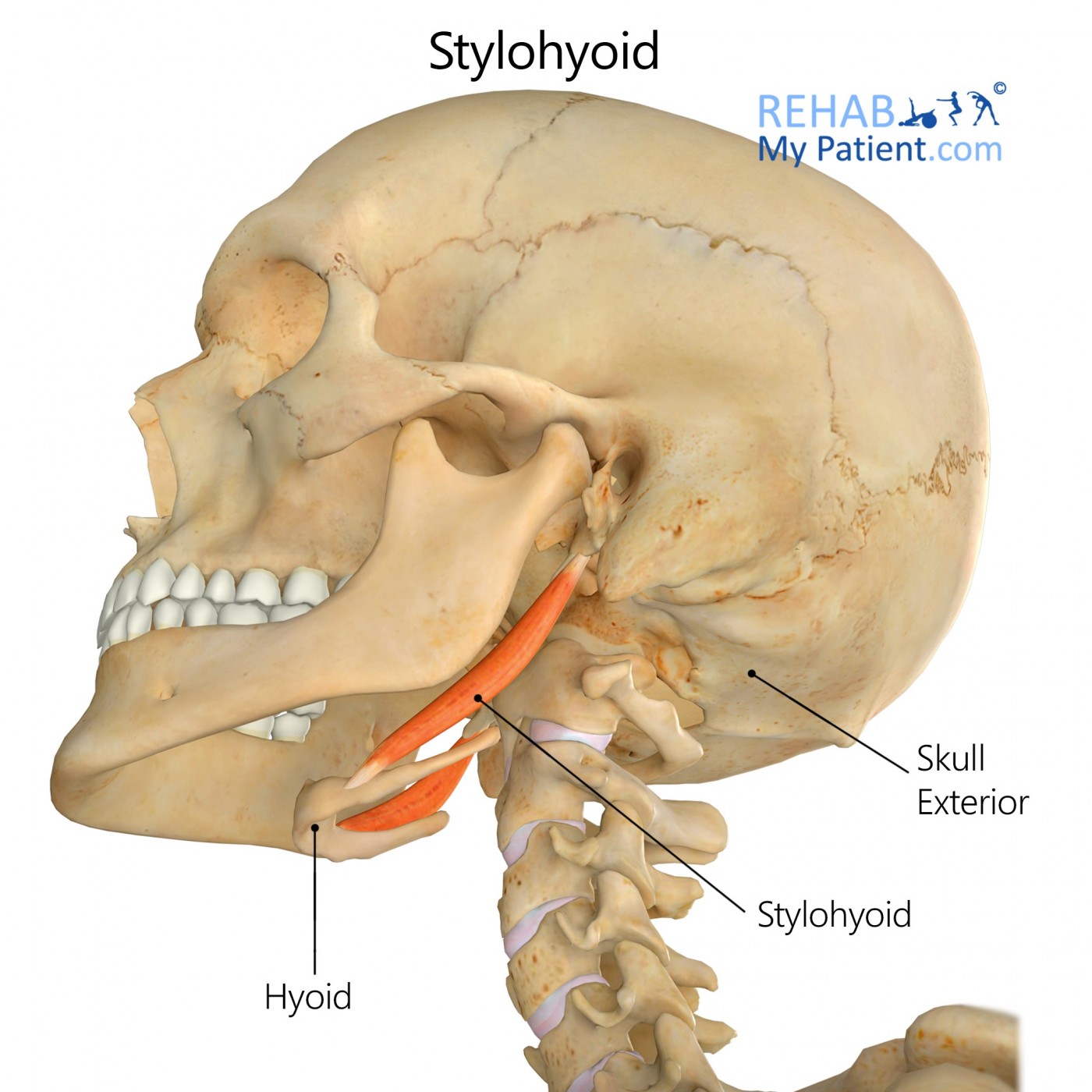
General information
The stylohyoid muscle is a slender muscle in the neck, which lies along the upper edge of the posterior belly of the digastris muscle. The muscle shares its innervations with the facial nerve. Its function is to draw the hyoid bone in a backward position to elevate the tongue, primarily when swallowing.
Literal meaning
Pillar shape or form.
Interesting information
Various medical conditions can cause damage to the stylohyoid muscle, especially if there are surrounding tissues involved. Having the tonsils removed can cause damage to the nerves that surround the muscle and cause scar tissue to form. This specific type of damage is a form of chronic nerve pain referred to as neuralgia.
This muscle is one of the various muscles in the body linked to myofascial pain syndrome. The condition can cause moderate to severe pain that can become so bothersome that the patient cannot function normally. In certain instances, medication will be enough to control the debilitating pain that relates to myofascial pain syndrome. In other instances, the patient may need physical therapy to help deal with the symptoms resulting from the condition. Severe cases require trigger point injections to deal with the condition. Treatment is targeted at being able to alleviate the symptoms, but there isn’t a known cure for this specific type of pain. Being able to manage the pain is the only way to overcome one of these conditions and function normally.
Origin
Posterior surface from the styloid process from the temporal bone.
Insertion
Body of the hyoid bone found near the base of the greater cornu.
Function
Muscle acts to elongate the base of the oral cavity from raising the hyoid bone and pulling it posteriorly.
Nerve supply
Facial nerve.
Blood supply
Superior thyroid artery.
Lingual artery’s suprahyoid branch.
Relevant research
Eagle’s syndrome happens when an elongated styloid process causes a recurrent pain in the throat or a foreign body sensation, facial pain or dysphagia. Common additional symptoms range from throat and neck pain along with radiation to the ipsilateral ear. Symptoms associated with the condition might also be confused with those that are attributed to a number of different facial neuralgias. Eagle’s syndrome may be diagnosed radiologically and through a physical examination. The treatment for this syndrome is mainly surgical. It is possible to shorten the styloid process by an external or intraoral approach. In this study, the Eagle’s syndrome exhibited unilateral symptoms along with a bilateral elongation of the styloid process.
Khandelwal S, Hada YS, Harsh A. Eagle's syndrome - A case report and review of the literature. Saudi Dent J. 2011;23(4):211?215. doi:10.1016/j.sdentj.2010.10.006
Stylohyoid exercises
Hanging head lift
Lie on either a bed or a sofa with the head dangling over the edge. Lift the chin toward the chest. Place a hand behind the head for assistance until the jaw and neck muscles grow stronger. Hold the pose for a few seconds and slowly lower the head to its original starting position. Repeat the exercise for five repetitions before relaxing.
Sign Up
Sign up for your free trial now!
Get started with Rehab My Patient today and revolutionize your exercise prescription process for effective rehabilitation.
Start Your 14-Day Free Trial
